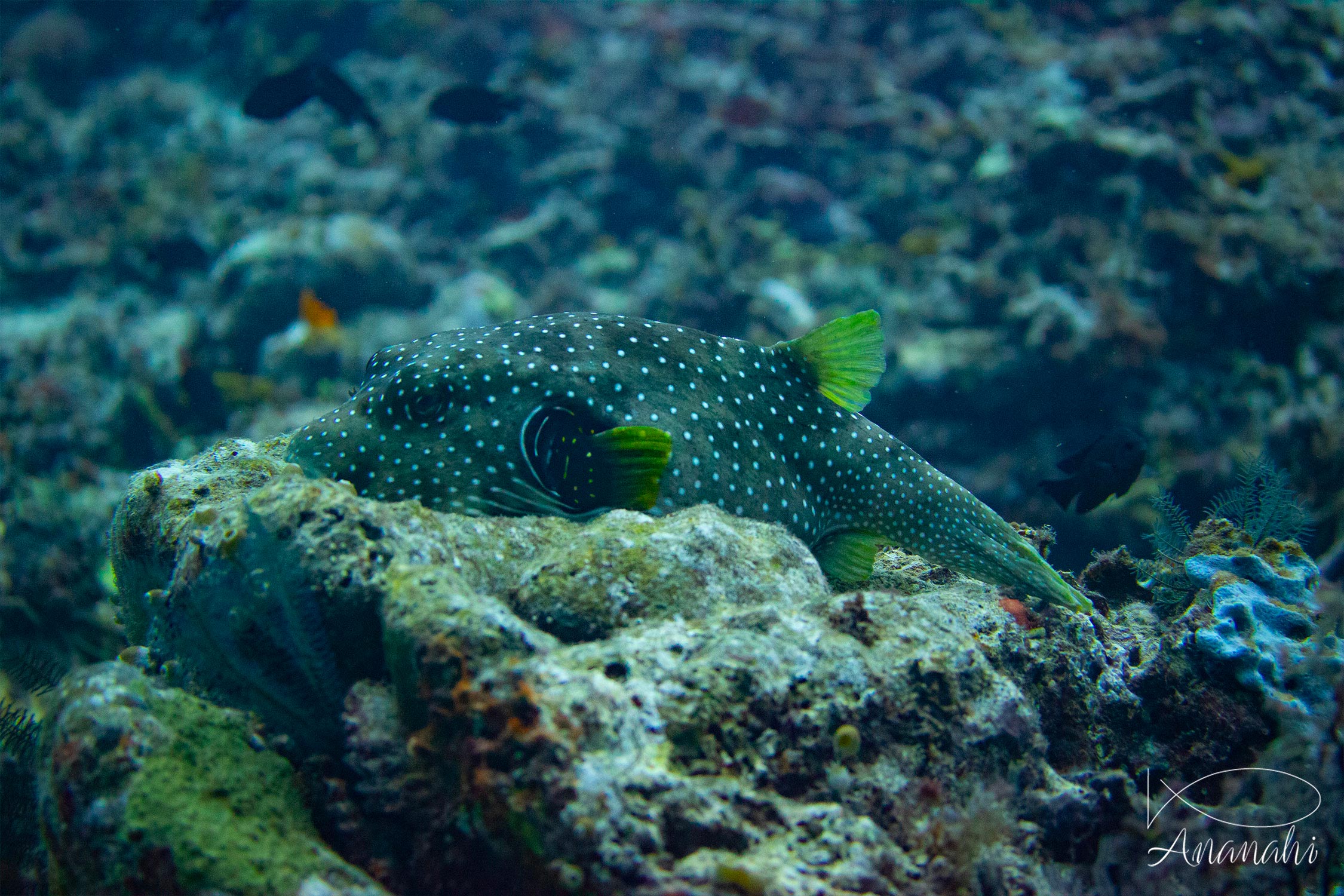
Scientific name: Arothron hispidus
Size: Up to 20 inches
Color: grayish or yellowish
Distinguishing feature: Blue dots on the body that become arcs of circles around the eyes and pectoral fins. A dark task at the level of the pectoral fin.
Where did we see it: Bali and Gili, Zanzibar, Thailand, Mayotte, Maldives, Raja Ampat

Scientific name: Arothron hispidus
Size: Up to 20 inches
Color: grayish or yellowish
Distinguishing feature: Blue dots on the body that become arcs of circles around the eyes and pectoral fins. A dark task at the level of the pectoral fin.
Where did we see it: Bali and Gili, Zanzibar, Thailand, Mayotte, Maldives, Raja Ampat
Also known as globefish, this fish can inflate water when it feels in danger, it can't move with this shape.
For this, the fish swallows the water, a membrane appears behind his teeth to avoid reflux.
The pufferfish becomes at this time much more difficult to eat, its skin also becoming very hard.
Mammals have a horizontal tail.
Fishes have a vertical fin.
The kakihona sushi (sushi wrapped in persimmon leaves) are really the best!
To eat them, you have to go to Nara!
Turtles are in economy mode when they are sleeping. If they are woken during night, they may not have enough air to return to surface.
So, please be careful during night dives!